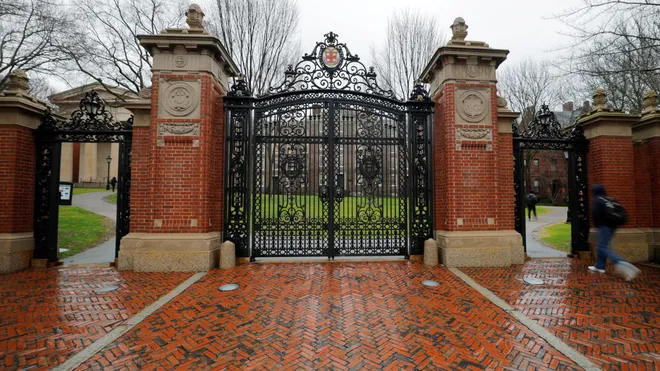In a surprising political turn, Brown University has signed a formal agreement with the Trump administration to restore halted federal funding to the Ivy League institution. This deal, which emerged after months of behind-the-scenes negotiations, has raised many eyebrows across the academic and political spectrum.
Let’s break down what the Brown University Trump administration deal actually entails, why this funding was stopped in the first place, and what this means for higher education in America.
Why Was Brown University’s Federal Funding Cut?
To understand the significance of this deal, we need to rewind.
In early 2024, the Trump administration reinstated stricter policies around university research transparency, especially concerning foreign funding, national security, and political activism on campuses. As a result, several universities, including Brown, came under scrutiny for allegedly failing to disclose certain international partnerships and financial dealings.
In February 2025, the U.S. Department of Education announced a temporary suspension of select federal grants to Brown University pending a comprehensive audit. These grants covered research in science, engineering, public health, and international studies. The move impacted nearly $50 million in funding, sparking widespread concern among students, faculty, and alumni.
The Agreement: What Brown and the Trump Admin Agreed On
After months of meetings between Brown University’s legal team and federal negotiators, both parties have now come to terms. The Brown University Trump administration deal outlines several key terms:
- Enhanced Financial Transparency
Brown has agreed to submit quarterly reports detailing all international contributions, grants, and collaborations exceeding $100,000. This includes disclosures from departments previously exempt from reporting. - National Security Assurance
The university will establish a “Research Integrity and Security Committee”, co-led by a government liaison, to ensure that no research under federal funding poses a national security threat. - Curriculum and Faculty Reviews
In a more controversial clause, Brown has agreed to conduct an internal audit of politically sensitive course material and speaker engagements. The Trump administration has insisted that public institutions receiving taxpayer money must avoid promoting what it calls “divisive ideologies.”
Brown responded by stating this clause would not infringe on academic freedom, but will ensure balanced representation of ideas—a stance that has drawn mixed reactions from the academic world.
- 5-Year Review Clause
The agreement will be re-evaluated in 5 years, with input from both parties. This gives both the university and the government flexibility depending on how political or educational landscapes change.
Funding Restored: What Programs Will Benefit?

The restored federal funding will immediately be redirected to several departments:
- Public Health Research: Especially important post-COVID, this area had suffered major funding cuts.
- Engineering and Technology Labs: Federal grants will support AI and clean energy research.
- International Affairs: Programs will now undergo increased vetting but will continue with government backing.
- Scholarships for Low-Income Students: Approximately $8 million will go directly toward financial aid.
University President Christina Paxson released a statement saying,
“We believe this agreement allows us to continue our mission while cooperating with federal standards. Brown will always protect academic freedom while ensuring transparency.”
Reactions from the Academic Community
The Brown University Trump administration deal has drawn mixed responses.
Supporters say:
- The deal sets a positive example of compromise.
- It restores essential research funding without major structural changes.
- It respects taxpayer concerns while maintaining academic integrity.
Critics argue:
- The deal could set a dangerous precedent of political interference in education.
- Requiring oversight over course content borders on censorship.
- The agreement favors short-term financial gains over long-term independence.
Political Implications of the Deal
With the 2026 midterm elections approaching, this deal has already entered political talking points. Republicans have praised the agreement as a “win for accountability,” while Democrats warn that it might “open the door to ideological control over universities.”
It’s also notable that Brown University, typically seen as a liberal institution, has made concessions to a conservative administration. This could signal a broader shift in how universities approach bipartisan cooperation in the future.
What This Means for Other Universities
Many universities are now watching Brown closely. If the agreement proves successful—both in protecting academic values and ensuring government compliance—it may become a blueprint for similar deals across the country.
Universities that have also come under scrutiny, like Yale and the University of Pennsylvania, may initiate similar negotiations. The Department of Education has not ruled out the possibility of applying these guidelines universally across all federally funded institutions.
Final Thoughts: Is This a Win or a Warning?
While the deal has resolved Brown’s immediate funding crisis, the larger debate about the autonomy of educational institutions continues. Some see this as a smart middle-ground solution, others view it as the start of government overreach in academic spaces.
For now, the Brown University Trump administration deal represents a high-stakes experiment in federal-university cooperation. Whether it becomes a roadmap for the future or a one-off case remains to be seen.
Do Follow USA Glory On Instagram
Read Next – How Trump’s Immigration Policies Affected Careers in Law & Medicine






